What are fillers?
Dermal Fillers are soft gels that are injected into the skin with a very fine needle. At the Ageless Skin and Lasers in Sewell, NJ, we offer Juvederm® fillers (Juvederm Voluma®, Juvederm Volbella®, Juvederm XC®, Juvederm Ultra XC®) and Radiesse® fillers.
Facial fillers are temporary, however long-lasting (results vary) solutions, used to contour or increase volume, in areas of the face that have lost tone or fullness.
What are fillers made of?
Juvaderm® and Radiesse® are crystal-clear, non-animal, biodegradable gels, consisting of hyaluronic acid, which is a natural substance already present in your body. Some dermal fillers also contain lidocaine, which is intended to decrease pain or discomfort related to the injection. Once in the skin, these fillers work by creating volume. The result is instantaneous and produces a long-lasting, natural enhancement, gentle and safe to your skin.
The materials used in dermal fillers include:
- Collagen: Collagen is a type of protein that is a major part of skin and other tissues in the body. Sources of purified collagen used in soft tissue fillers can be from cow (bovine) or human cells. The effects of collagen fillers generally last for 3-4 months. They are the shortest lasting of injectable filler materials.
- Hyaluronic acid: Hyaluronic acid is a type of sugar (polysaccharide) that is present in body tissues, such as in skin and cartilage. It is able to combine with water and swell when in gel form, causing a smoothing/filling effect. Sources of hyaluronic acid used in dermal fillers can be from bacteria or rooster combs (avian). In some cases, hyaluronic acid used in dermal fillers is chemically modified (crosslinked) to make it last longer in the body. The effects of this material last approximately 6 – 12 months.
- Calcium hydroxylapatite: Calcium hydroxylapatite is a type of mineral that is commonly found in human teeth and bones. For wrinkle filling in the face or for the hand, calcium hydroxylapatite particles are suspended in a gel-like solution and then injected into the wrinkle in the face or under the skin in the back of the hand. The effects of this material last approximately 18 months. While in the body, calcium hydroxylapatite will be visible in x-rays and may obscure underlying features.
- Poly-L-lactic acid (PLLA): PLLA is a biodegradable, biocompatible man-made polymer. This material has wide uses in absorbable stitches and bone screws. PLLA is a long lasting filler material that is given in a series of injections over a period of several months. The effects of PLLA generally become increasingly apparent over time (over a period of several weeks) and its effects may last up to 2 years.
- Polymethylmethacrylate beads (PMMA microspheres): PMMA is a non-biodegradable, biocompatible, man-made polymer. This material is used in other medical devices, such as bone cement and intraocular lenses. PMMA beads are tiny, round, smooth particles that are not absorbed by the body. When used as a soft tissue filler, PMMA beads are suspended in a gel-like solution that contains cow (bovine) collagen and injected into the face.
Chin and Lip Enhancement with Dermal Filler
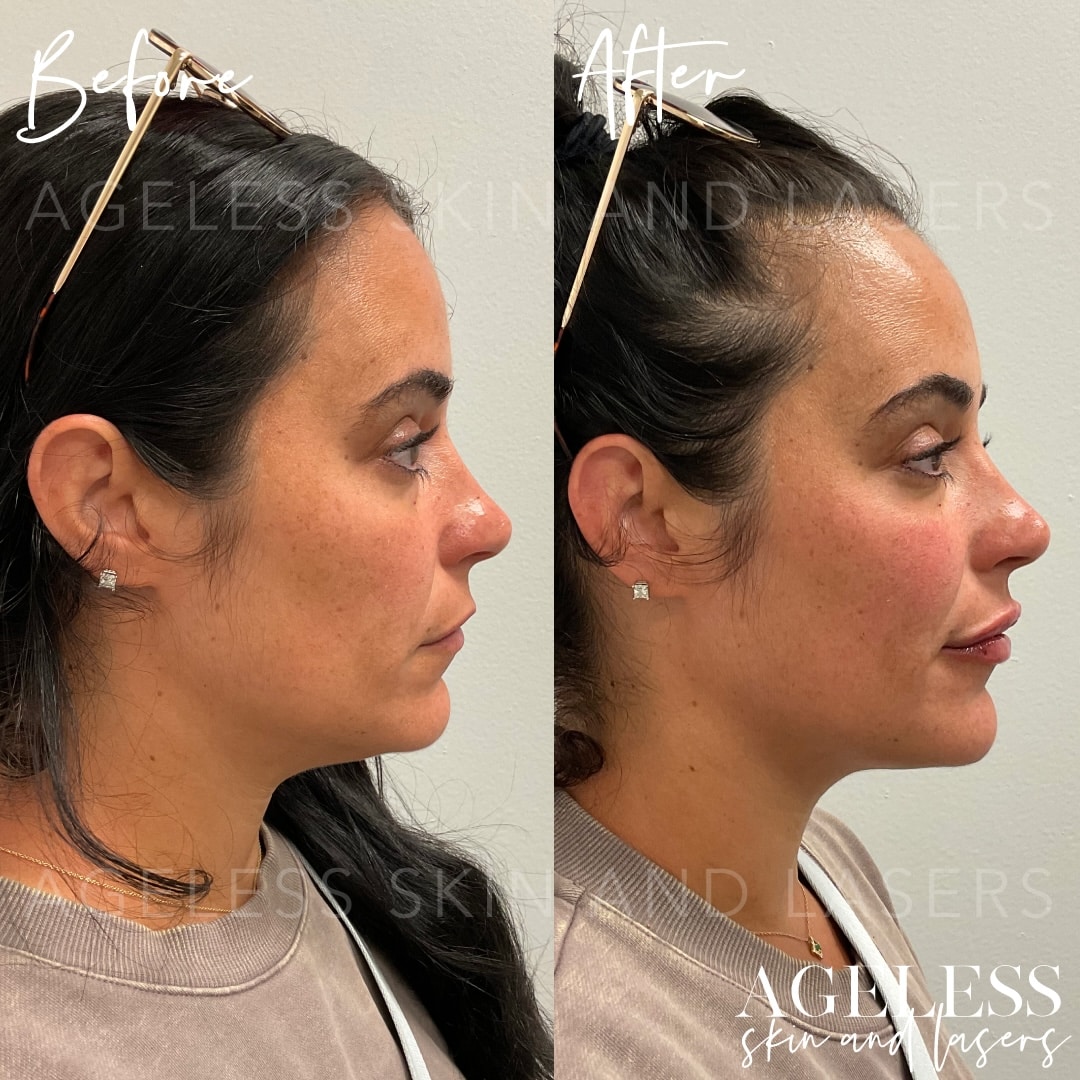
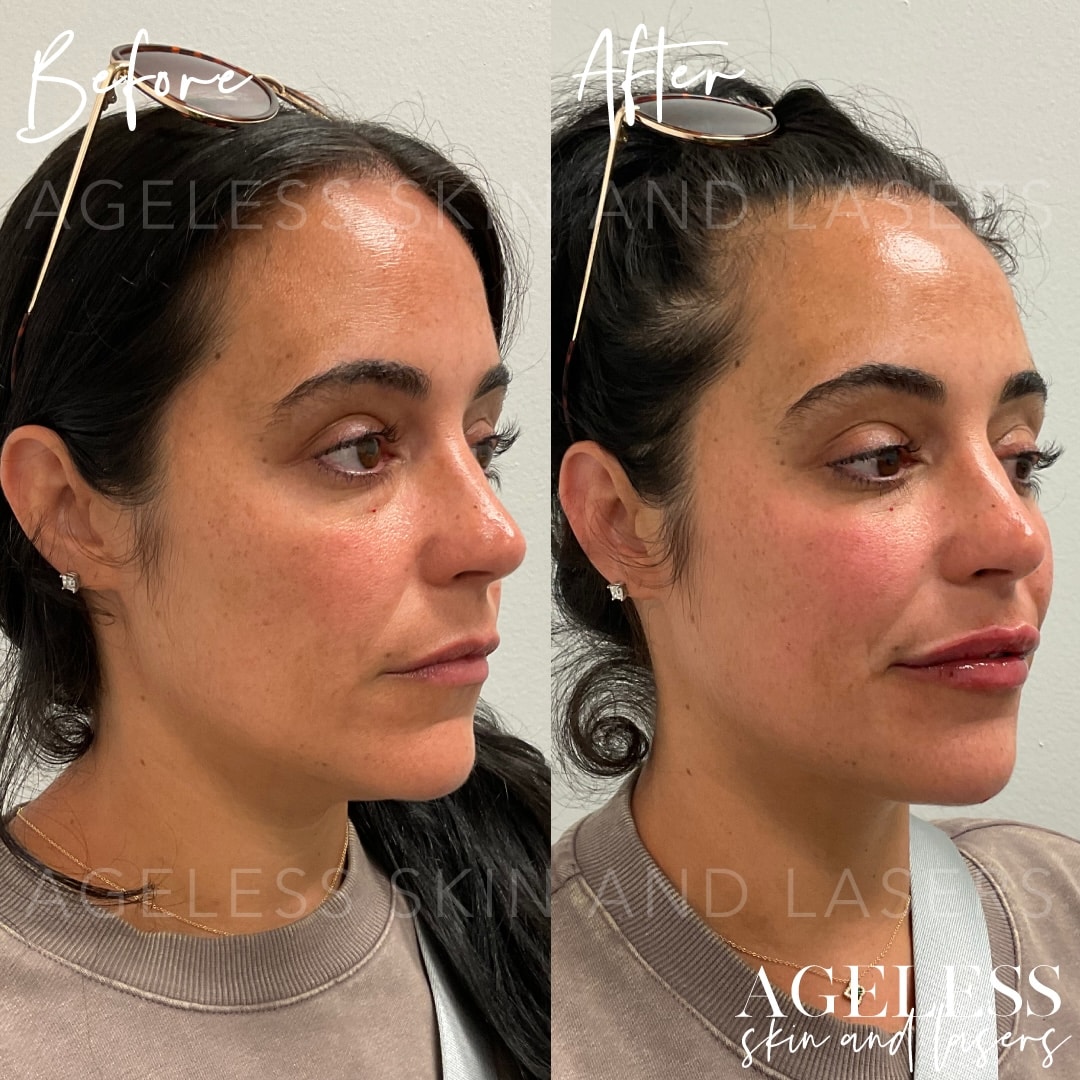
Liquid Face Lift with Dermal Filler
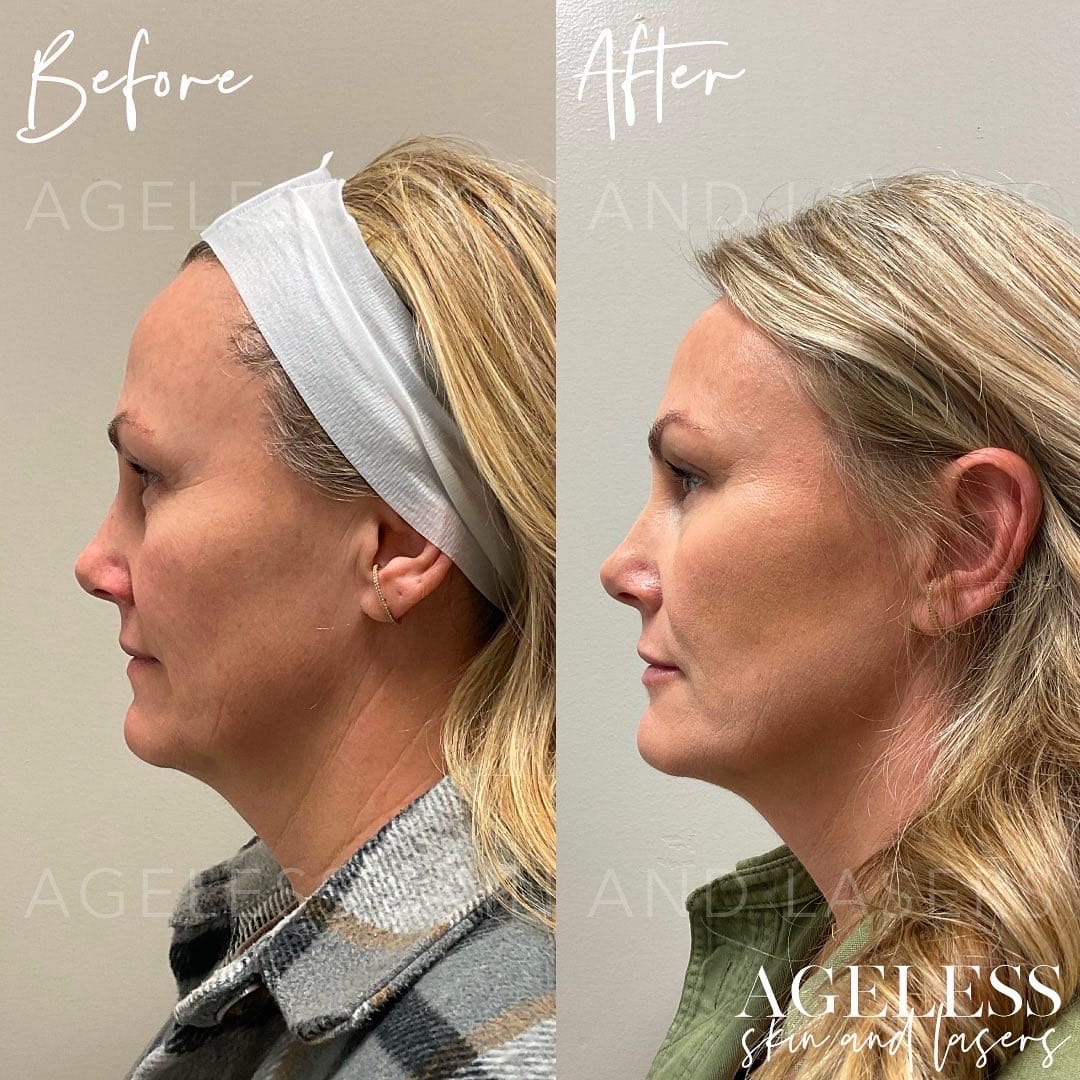
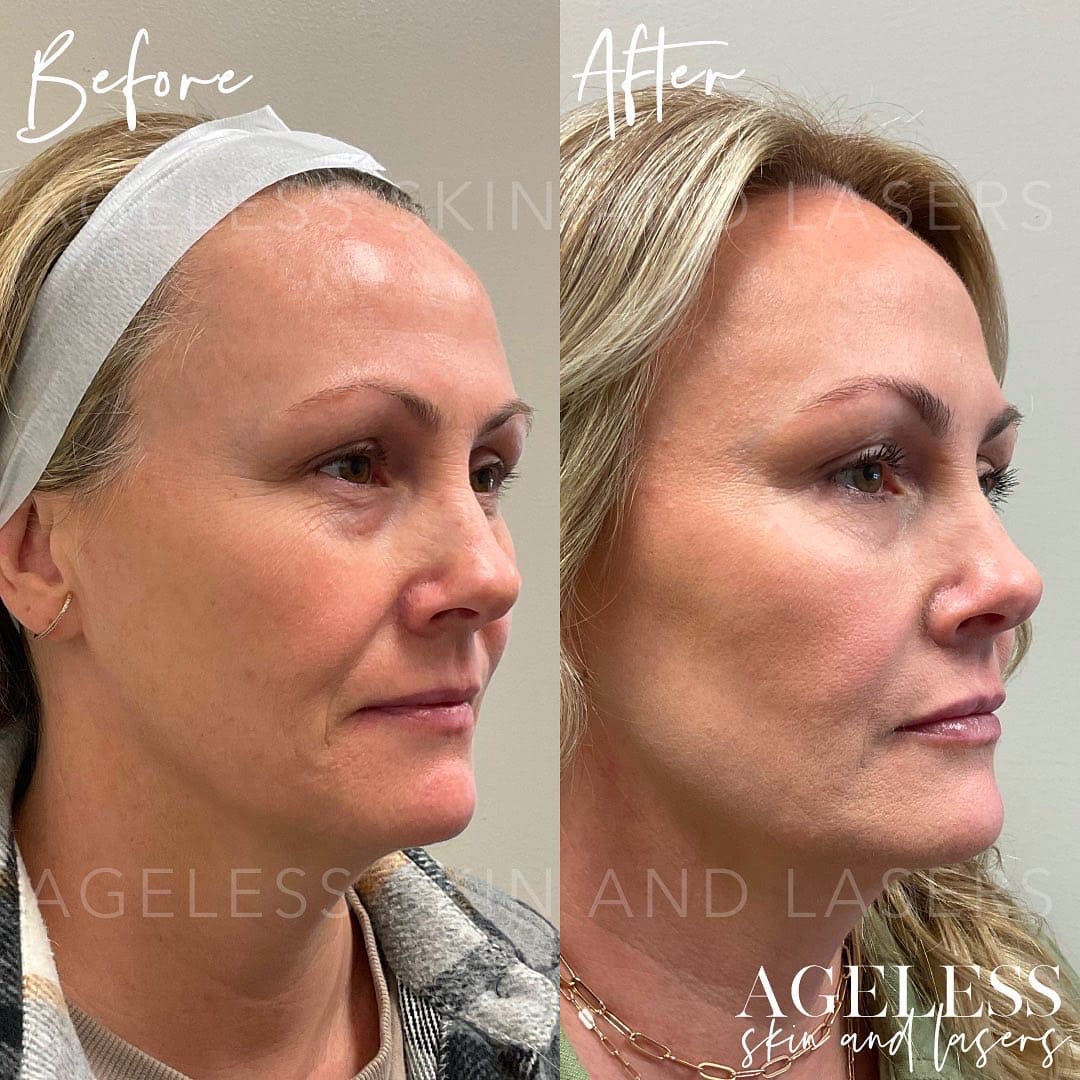
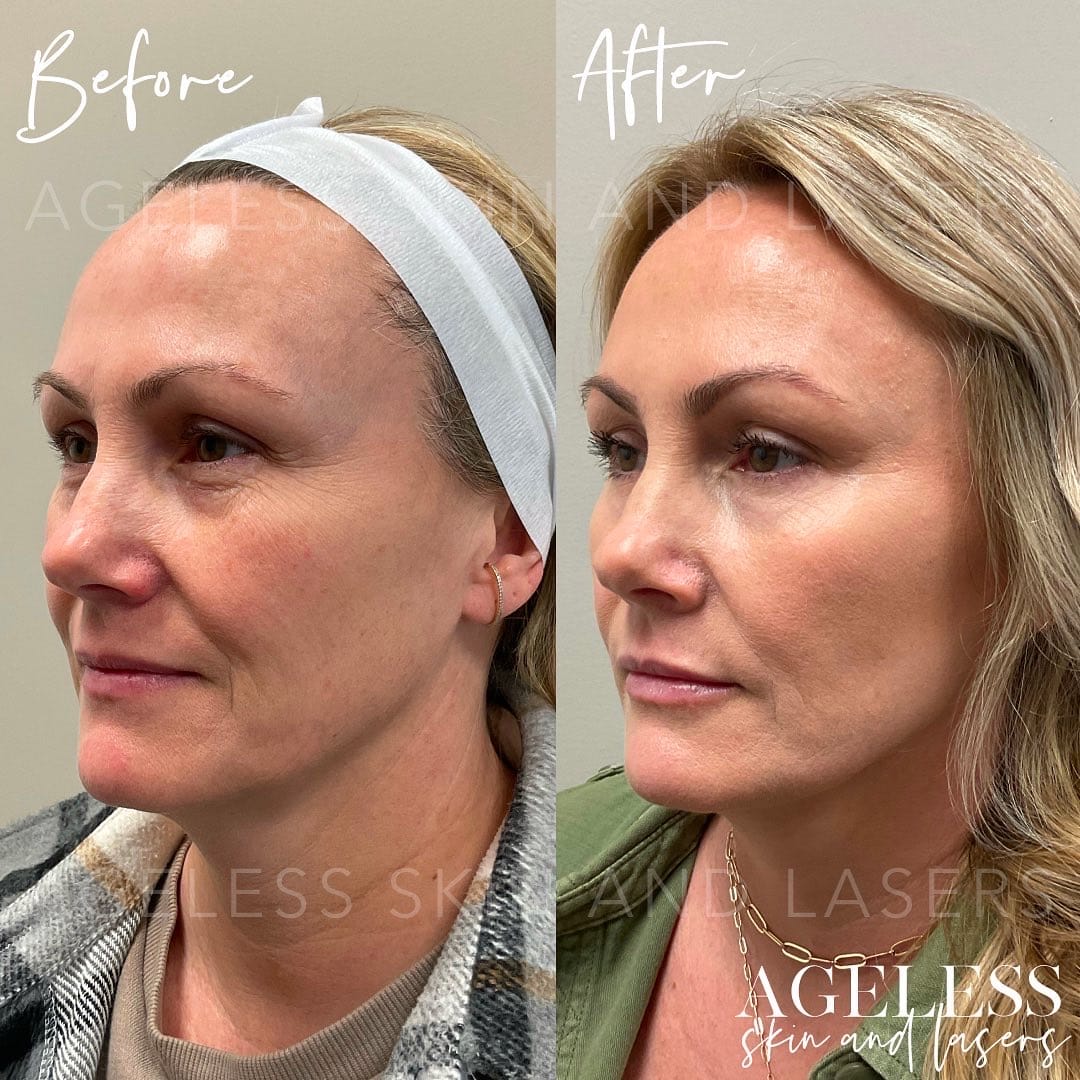
Lip Enhancement with Dermal Filler
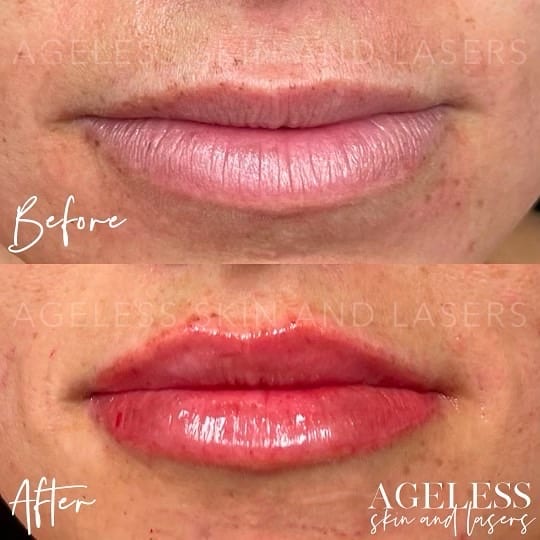
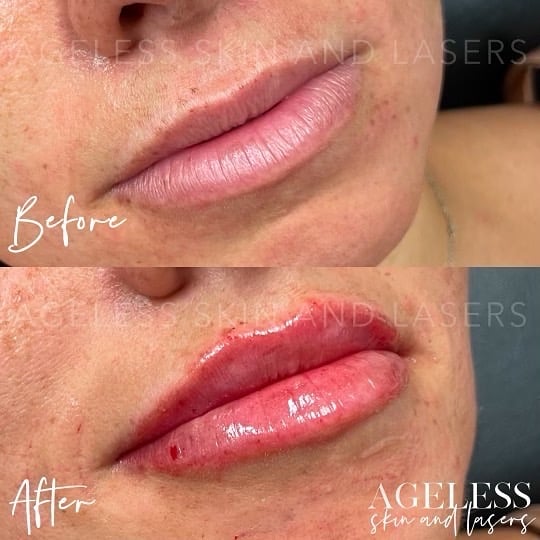
Facial Balancing with Dermal Filler
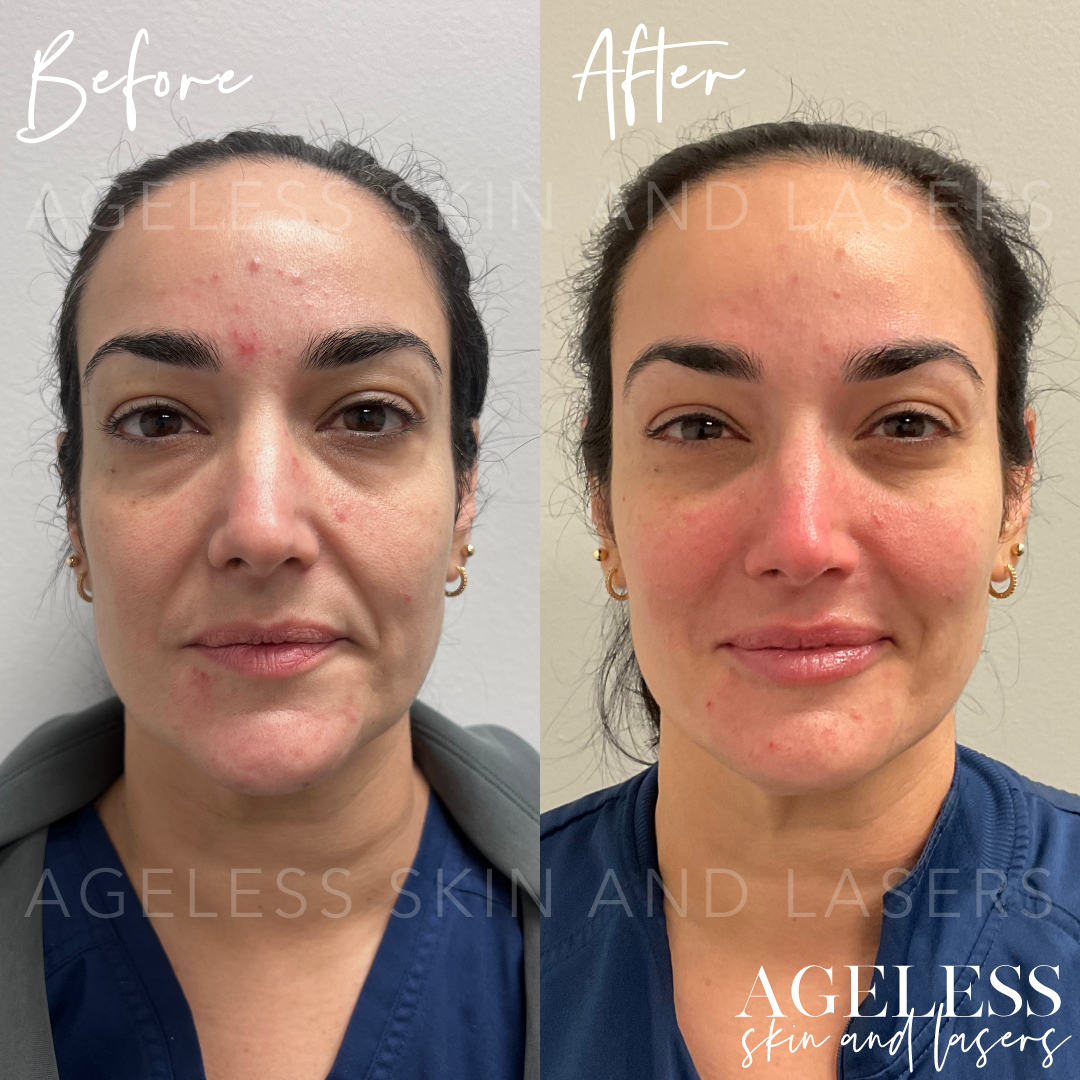
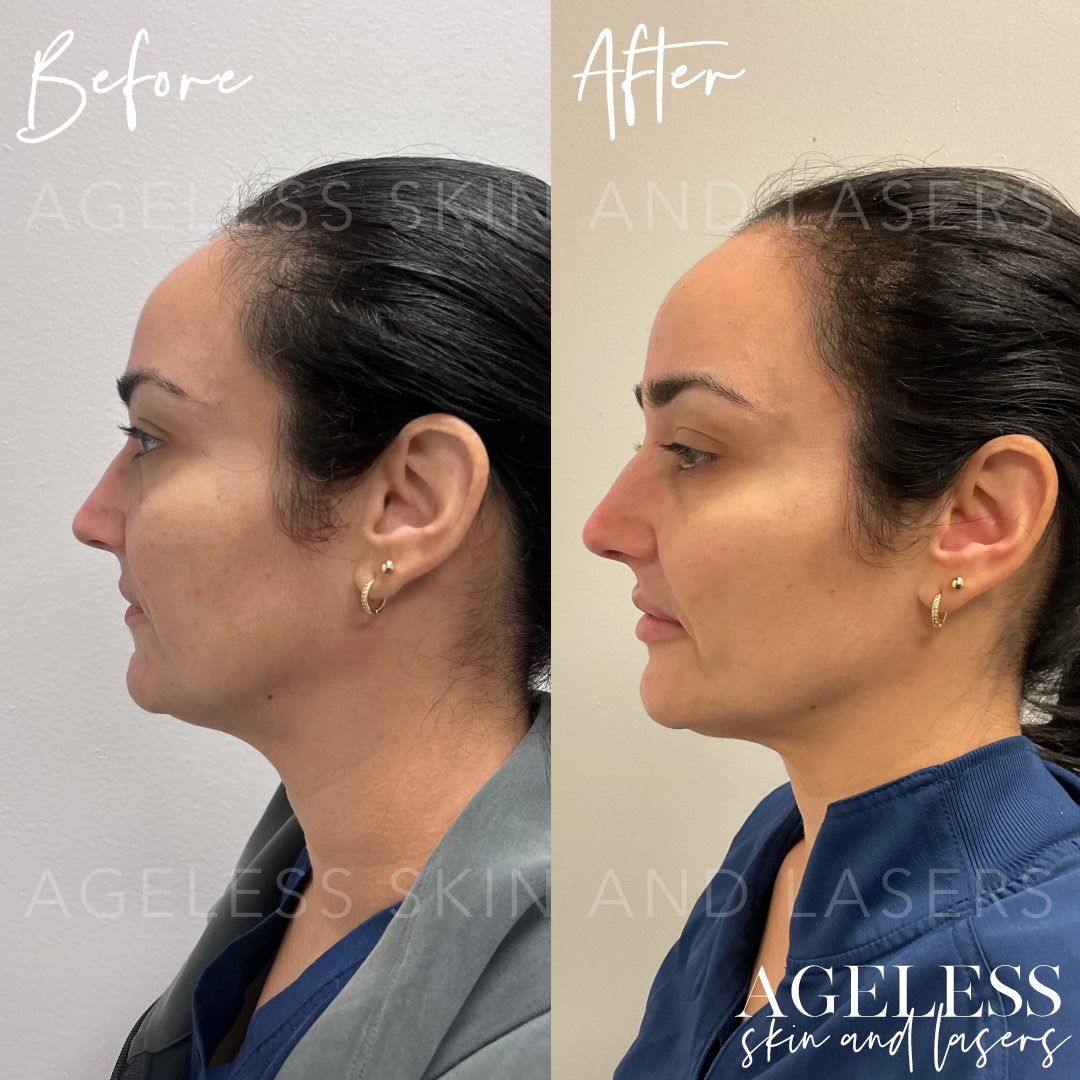
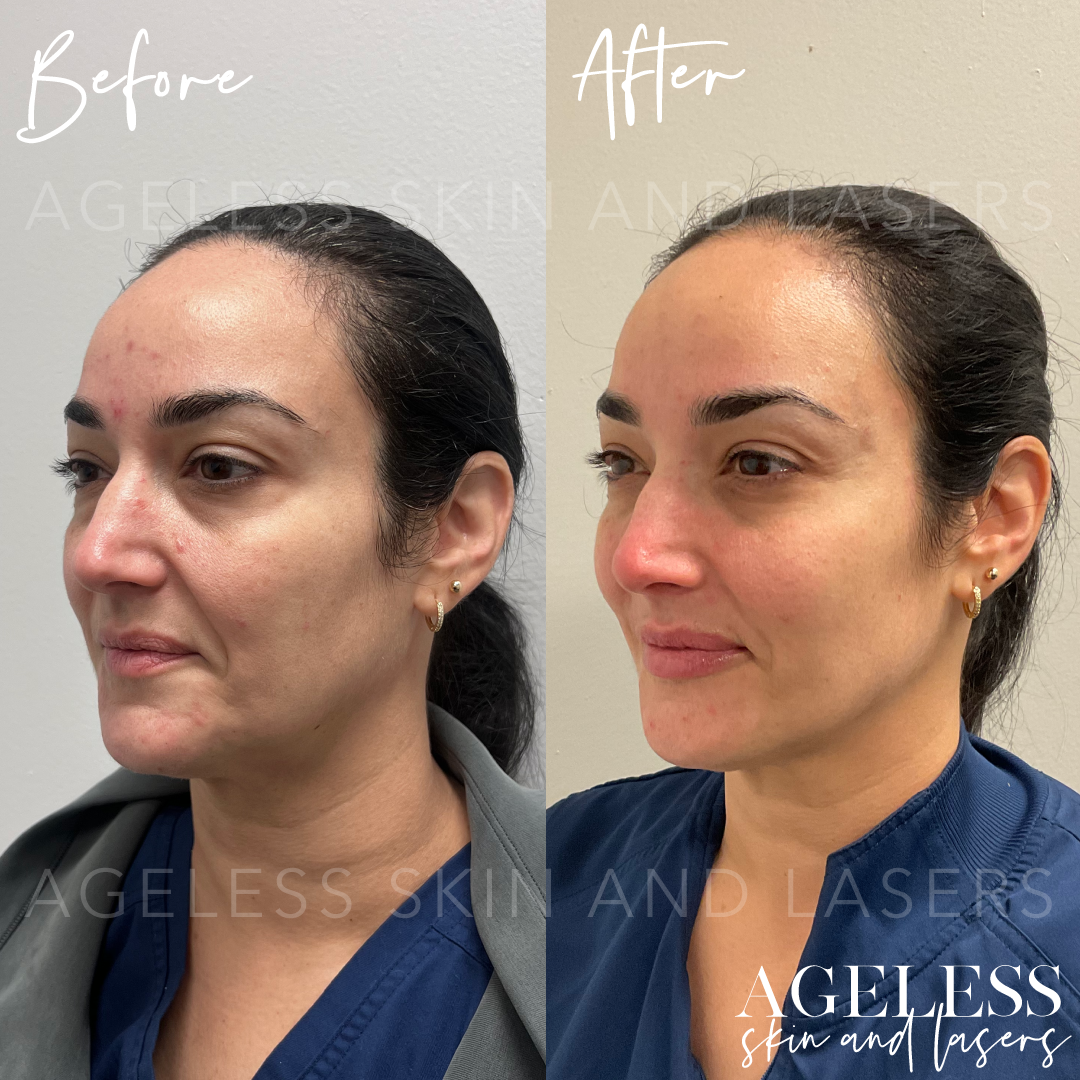
Why Choose Ageless Skin and Lasers in Sewell, NJ?
Ageless Skin and Lasers is located is in the heart of South Jersey serving Sewell, Mantua, Mullica Hill, Washington Township, Williamstown, Pitman and Glassboro areas. Our practice is top 3% in the nation for Botox and Dermal Filler. Dr. Brenza has been named Best Physician for Women and Top Doctor in South Jersey consecutively since 2012. Dr. Danielle Brenza and her team can work with you to develop a personalized plan to meet your individual goals enhancing your own uniqueness and beauty! Our goals are to give you the most natural look using the most advanced methods and skill. Start your personalized rejuvenation plan and schedule your complimentary consultation today!
Fillers FAQ
What are dermal fillers?
Dermal fillers are substance/gels injected beneath the skin’s surface to smooth wrinkles and add volume and contour. The products are composed of stabilised hyaluronic acid (HA) which occurs naturally in the cells of the skin. It works by drawing in water and therefore augmenting the skin, thus reducing the wrinkle treated. It is by no means permanent and is totally biodegradable. Depending on what type of dermal fillers, results can last between one to two years.
Dermal fillers are very safe and have been used for over a decade. The most popular brand of dermal filler has sold over 20 million syringes.
What areas of the face can dermal fillers be used?
Best Dermal Filler Areas The face loses volume and contour when we age, the bones and the soft tissue dissolve and contribute to appearance of sagging. Dermal fillers may be used to replace this volume loss and restore the structural support, giving the patient a more youthful appearance. The aim is to make the face more harmonious and rejuvenated.
For instance, the lips may be injected to improve their shape, size, symmetry and proportion. The cheeks may be injected to make a face more defined and attractive. An underdeveloped chin may be injected to make it appear more projected and proportionate. The nose may be injected to improve the shape and its contour.
Is it painful?
Generally, basic dermal filler procedures require no anaesthetic as the dermal filler contains local anaesthetic. It is simple and straight-forward, involving a few tiny injections directly into the skin, and takes between 15–30 minutes. Make-up can be applied immediately after the procedure and you can go straight back to work. Result can be seen immediately. Optimal results can be maintained over a long period of time through regular repeated treatments. The procedure varies from person to person depending on your requirements and the severity of the wrinkles that are being treated, in addition to the particular dermal filler being administered.
When will I see results and how long will they last?
Results are seen instantly after the treatment, although this gradually improves over the course of the following 2–4 weeks. Results can last between 9–18 months although optimal results can be maintained over a long period of time through regular repeated treatments. The lengevity varies from person to person depending on your requirements and the severity of the wrinkles that are being treated, in addition to the particular dermal filler being administered.
Are there any side effects?
Today’s dermal fillers have come a long way since the first-generation of collagen injections. Advanced injection techniques, coupled with the use of micro-cannula (blunt needle) and improved product safety means that significant side effects are extremely uncommon but may include:
Injection-related reactions: these reactions may include redness at the injection site immediately after the treatment.
Bruising: occasionally bruising can occur. However the use of micro-cannula (blunt needle) dramatically reduces the risk of bruising.
Contour irregularities can and do occasionally occur. Massaging can usually smooth out any ‘lumpiness’ however if persistent the filler can be easily and rapidly dissolved.
Infection — as with all injections, this procedure carries a risk of infection. The syringe is sterile and standard precautions associated with injectable materials are taken.
Necrosis — one of the worst possible complications of dermal filler. Fortunately, this is extremely rare. It happens when the dermal filler is accidentally injected into a blood vessel and it subsequently blocks the blood supply to the skin/tissue in that area.
Blindness — This is a very rare complication. There have been approximately 100 cases in the world and is caused by injecting dermal filler into blood vessel which has a connection with the artery which supplies blood and oxygen to the eye. There is no treatment so far for this that has been successful.
What is the after care?
After your treatment we will again go through with you any after care advice in order to maximise your treatment benefits and avoid any undesirable side effects.
You can resume normal activities, drive yourself home or return to work immediately after the treatment.
As with any type of injection there may be some slight redness immediately afterwards. Camouflage make up may be applied.
The results directly after the treatment should therefore not be seen as the final results. This is because over the following 2 weeks the results will gradually improve.
For 2 weeks after the treatment you are advised to avoid extreme heat (sun bed or sunbathing) or intense cold.
